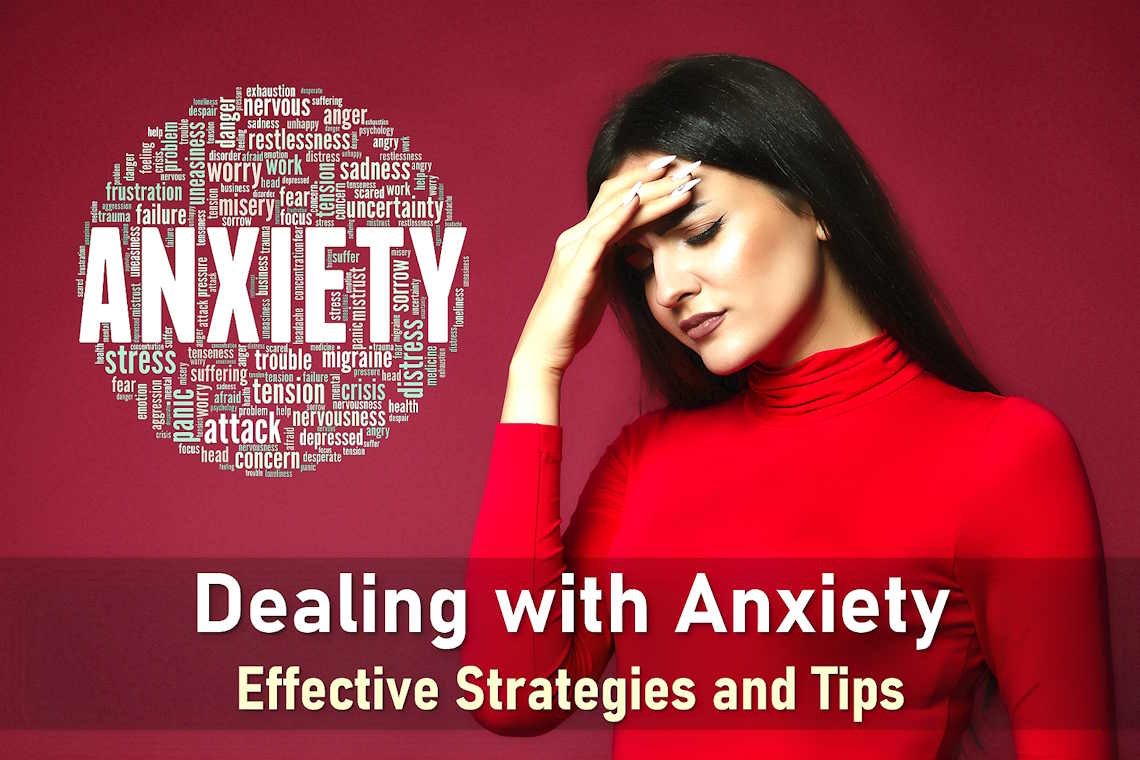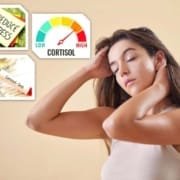Anxiety Disorders: Types, Treatment, and Self-Help Strategies
Anxiety disorders can disrupt daily life, affecting work, relationships, and overall well-being. The good news? With the right strategies, from therapy to lifestyle changes, recovery is possible. Whether you’re dealing with generalized anxiety disorder, social anxiety, or occasional anxiety attacks, understanding your symptoms and treatment options is the first step toward relief.
What Is Anxiety?
Anxiety is a natural response to stress, signaling danger and preparing the body to react. A racing heart, rapid breathing, or temporary worry can all be normal reactions. In moderation, anxiety even has benefits, like motivating you to meet deadlines or stay alert in risky situations.
But when anxiety becomes excessive or persistent, triggered by non-threatening situations, it may indicate an anxiety disorder. According to national surveys, nearly 20% of U.S. adults and one in three teens experience anxiety disorders yearly.
Common Types of Anxiety Disorders
An accurate diagnosis is crucial for effective treatment. Here are some prevalent anxiety disorders:
- Generalized Anxiety Disorder (GAD): Excessive worry about everyday issues for six months or longer, often accompanied by physical signs of anxiety like muscle tension or dizziness.
- Social Anxiety Disorder: Intense fear of social interactions or performance situations (e.g., public speaking).
- Phobias: Extreme fear of specific objects or scenarios (e.g., heights, spiders).
- Panic Disorder: Sudden, overwhelming panic attacks vs anxiety attacks, episodes of terror with physical symptoms like chest pain or shortness of breath, often without a clear cause.
The Physical and Emotional Toll of Anxiety
Chronic anxiety doesn’t just affect mental health, it harms the body. Elevated stress hormones like cortisol can raise blood pressure, increasing risks for heart disease, stroke, and other conditions. Brain studies suggest that overactivity in the amygdala (the brain’s fear center) may trigger inflammation linked to cardiovascular problems.
Beyond physical health, anxiety can erode quality of life. Avoidance behaviors, skipping social events, turning down opportunities—can lead to isolation and missed experiences.
Practical Strategies to Manage Anxiety
Dealing with anxiety requires a multi-pronged approach. From education to breathing techniques, here are proven methods to help regain control and reduce anxiety symptoms.
Educate Yourself About Anxiety
Understanding how anxiety works is a powerful first step toward managing it. Anxiety triggers the body’s fight-or-flight response, a survival mechanism designed for real danger. However, for those with generalized anxiety disorder or other anxiety conditions, this response activates unnecessarily, like during everyday tasks or social interactions.
Learning about:
- The physiological roots of anxiety (e.g., adrenaline surges, increased heart rate).
- How chronic anxiety differs from normal stress.
- Why harmless situations can feel threatening.
can help demystify your experiences and promote a sense of control.
Practice Mindfulness
Mindfulness teaches you to anchor yourself in the present moment instead of getting lost in anxious thoughts. Studies show it can significantly reduce signs of anxiety by interrupting cycles of worry.
Simple ways to start:
- Focus on your breath or the sensations around you (sounds, textures).
- Observe anxious thoughts without judgment, letting them pass like clouds.
- Use guided apps or videos if you’re new to the practice.
Relaxation Techniques to Calm Your Body
Chronic anxiety often leads to muscle tension and restlessness. These methods can help:
- Progressive muscle relaxation: Tense and release each muscle group from toes to head.
- Abdominal breathing: Inhale deeply through your nose, letting your belly rise (not your chest).
- Isometric exercises: Push against a wall or clasp your hands together to release tension.
Master Breathing Techniques
Hyperventilation, rapid, shallow breathing, worsens anxiety attack symptoms by disrupting oxygen-carbon dioxide balance. Correct breathing can counteract this:
- Diaphragmatic breathing: Place one hand on your abdomen; it should expand as you inhale slowly.
- Paced breathing: Inhale for 4 seconds, hold for 4, exhale for 6.
- Breath-holding: Briefly holding your breath (2–3 seconds) can restore CO2 levels.
Tip: If chest breathing is a habit, practice lying down with a book on your stomach, it should rise when you breathe correctly.
Cognitive Therapy
Cognitive therapy helps identify and change thought patterns that fuel anxiety. For example, someone with social anxiety might think, “Everyone thinks I’m awkward,” worsening their discomfort in gatherings. This therapy is based on the idea that:
- Beliefs shape thoughts (e.g., “I must be liked by everyone”).
- Thoughts trigger feelings (e.g., “They ignored me, so they hate me”).
- Feelings drive behaviors (e.g., avoiding social events).
Key techniques include:
- Reality testing: Questioning negative assumptions (“Is there evidence everyone dislikes me?”).
- Cognitive restructuring: Replacing irrational fears with balanced thoughts (“Some people may not connect with me, and that’s okay”).
- Attention training: Shifting focus away from self-criticism during interactions.
Behavior Therapy
Exposure therapy, a core part of behavior therapy, helps desensitize you to anxiety triggers by controlled confrontation. For instance, if you fear public speaking, exposure might start with speaking to a mirror before addressing small groups.
Steps to practice exposure therapy:
- Rank fears from mild to severe.
- Start small with the least intimidating scenario.
- Visualize the situation and analyze what makes it frightening.
- Create a step-by-step plan (e.g., spend 5 minutes in a crowded space, then increase time).
- Use coping tools like deep breathing or positive self-talk during exposure.
- Reflect afterward—note that the feared outcome didn’t occur.
- Repeat regularly to build confidence.
- Progress to harder challenges as you gain resilience.
Dietary Adjustments to Support Mental Health
Nutrition plays a key role in managing anxiety symptoms. Deficiencies in certain nutrients can worsen anxiety, while stimulants can mimic signs of anxiety.
Foods to include:
- Magnesium-rich foods (leafy greens, nuts, whole grains): Helps relax muscles and calm the nervous system.
- B vitamins and calcium (eggs, dairy, fortified cereals): Supports neurotransmitter function.
Foods to avoid:
- Caffeine and nicotine: Stimulate adrenaline, increasing heart rate and jitteriness.
- Processed foods high in salt/additives: May disrupt mood-regulating hormones.
Opt for fresh, whole foods to stabilize energy and mood.
Exercise: A Natural Anxiety Reliever
Physical activity counters the fight-or-flight response by metabolizing stress hormones like adrenaline. Regular exercise also releases endorphins, which improve mood.
Tips for an anxiety-reducing routine:
- Aim for 30 minutes of activity, 3–4 times weekly.
- Mix cardio (walking, swimming) with strength training or yoga.
- Choose enjoyable activities to stay consistent.
Pairing exercise with therapies like cognitive restructuring or anxiety medication (e.g., propranolol for anxiety) can enhance overall anxiety treatment results.
The Power of Assertiveness in Reducing Anxiety
Many people with anxiety disorders struggle with assertiveness, fearing conflict or believing their needs don’t matter. However, passive communication often worsens social anxiety and erodes self-worth over time.
How to practice assertiveness:
- Use “I” statements (“I feel overwhelmed when…” instead of “You make me…”).
- Set clear boundaries without apology.
- Express opinions respectfully, even if they differ from others’.
Developing this skill can significantly improve relationships and how to deal with anxiety in social settings.
Rebuilding Self-Esteem
Low self-esteem and anxiety often create a vicious cycle. Feelings of worthlessness may lead to:
- Social withdrawal and isolation
- Persistent shame or guilt
- Difficulty performing at work or school
- Co-occurring medication for depression may sometimes be needed
Strategies to boost self-esteem:
- Challenge negative self-talk (“I failed at this” becomes “I learned something new”).
- Keep a success journal to track accomplishments.
- Seek counseling or join support groups to reframe self-perception.
Structured Problem Solving for Chronic Worriers
Those with generalized anxiety disorder often ruminate instead of taking action. Structured problem solving breaks this pattern:
- Define the problem clearly and specifically.
- Brainstorm solutions without judging them initially.
- Evaluate options by pros and cons.
- Choose and implement the best solution.
- Review results and adjust if needed.
This method provides a concrete alternative to endless worrying.
Medication’s for Anxiety Treatment
While anxiety medication can help manage acute symptoms, it’s most effective as a short-term solution alongside therapy:
- Tranquilizers (like hydroxyzine for anxiety) may offer temporary relief.
- Antidepressants (such as SSRIs) can help when anxiety co-occurs with depression.
- Beta-blockers (e.g., propranolol for anxiety) may control physical symptoms like rapid heartbeat.
Research shows psychological approaches like CBT provide more lasting benefits than medication alone.
The Value of Support Networks
Support groups offer unique benefits for those managing anxiety:
- Safe spaces to share experiences without judgment.
- Practical tips from others who understand the challenges.
- Opportunities to build social connections and reduce isolation.
- Education about anxiety treatment options and coping strategies.
Many find combining professional anxiety therapy with peer support accelerates recovery.
Final Thoughts
Anxiety doesn’t have to control your life. Whether you’re managing occasional stress or navigating a diagnosed disorder, remember that effective strategies, from therapy to lifestyle changes, exist. Progress may feel slow, but each small step builds resilience. If symptoms persist, consult a mental health professional to explore personalized anxiety treatment options. You deserve support, and with the right tools, a calmer future is possible.
Frequently Asked Questions About Anxiety
What’s the difference between a panic attack vs anxiety attack?
Panic attacks strike suddenly with intense physical symptoms (e.g., chest pain, fear of dying) and often feel uncontrollable. Anxiety attacks typically build gradually and are tied to excessive worry about a perceived threat. Both share symptoms like rapid heartbeat, but panic attacks are more severe.
When is the best time to take Lexapro for anxiety?
Lexapro (escitalopram) is often taken in the morning to avoid potential insomnia. However, if it causes drowsiness, your doctor may recommend evening doses. Consistency matters most—take it at the same time daily for stable medication levels.
How can I tell if I need an anxiety test?
Consider a professional evaluation if you experience frequent signs of anxiety (restlessness, fatigue, irritability) for over 6 months, or if worries disrupt work/relationships. Online screening tools can help, but a clinician provides definitive diagnosis.
Can gabapentin help with anxiety?
Though primarily for nerve pain, gabapentin is sometimes prescribed off-label for anxiety—especially social anxiety or panic disorder. It may calm overactive nerves, but evidence is mixed. Always discuss risks (e.g., dizziness, dependence) with your doctor.
What causes anxiety attacks at night?
Nighttime attacks may stem from unresolved daytime stress, hormonal shifts, or a quiet environment that amplifies worries. Poor sleep habits or separation anxiety (in adults or children) can also trigger them.
How do I know if my child has separation anxiety?
Look for extreme distress when apart from caregivers, refusal to sleep alone, or physical symptoms (headaches, nausea) before separation. It’s common in young children but may need intervention if persistent beyond age 4–5.
What are quick ways to reduce anxiety immediately?
Try the 5-4-3-2-1 grounding technique: Name 5 things you see, 4 you feel, 3 you hear, 2 you smell, and 1 you taste. Splash cold water on your face or chew gum (activates the parasympathetic nervous system).
When does “normal” anxiety become a disorder?
Anxiety becomes a disorder when it’s disproportionate to situations, lasts months, and impairs daily life. Key red flags: avoiding activities you once enjoyed or spending >1 hour/day on uncontrollable worries.










